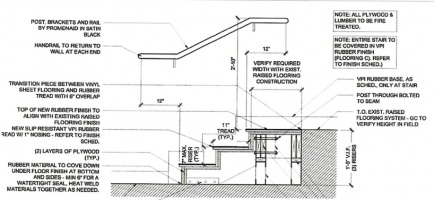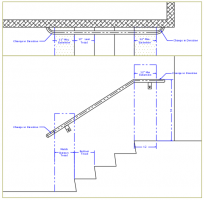tbz
SAWHORSE
Afternoon all,
Let me start with the sketch shown below of the handrail, the extensions return to the wall at the top and bottom.
We know the handrail is non-compliant for the IBC, however since the IRC only requires handrails from the top riser to the bottom riser, is this design compliant with the IRC?
I am in search of yes or no and why?
Thanks in advance....

Let me start with the sketch shown below of the handrail, the extensions return to the wall at the top and bottom.
We know the handrail is non-compliant for the IBC, however since the IRC only requires handrails from the top riser to the bottom riser, is this design compliant with the IRC?
I am in search of yes or no and why?
Thanks in advance....





